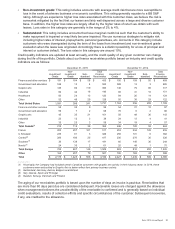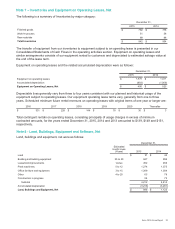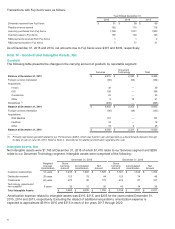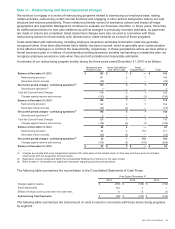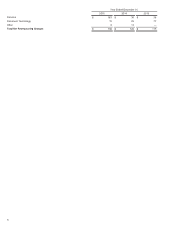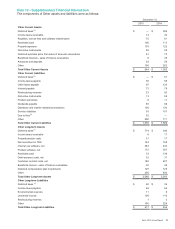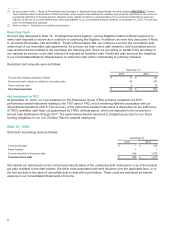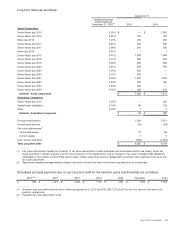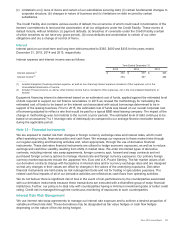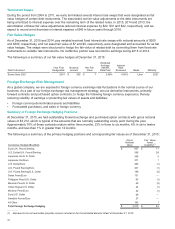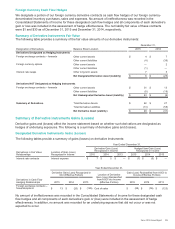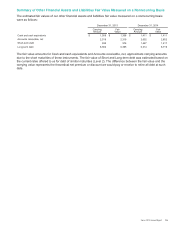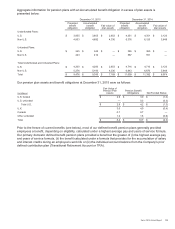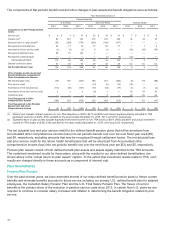Xerox 2015 Annual Report Download - page 116
Download and view the complete annual report
Please find page 116 of the 2015 Xerox annual report below. You can navigate through the pages in the report by either clicking on the pages listed below, or by using the keyword search tool below to find specific information within the annual report.
__________
(1) As discussed in Note 1 - Basis of Presentation and Summary of Significant Accounting Policies, we early adopted ASU 2015-17, Income
Taxes: Balance Sheet Classification of Deferred Taxes, which requires that deferred tax liabilities and assets be classified as non-current in
a classified statement of financial position. Adoption of this update resulted in a reclassification of our net current deferred tax asset and
liabilities to the net non-current deferred tax asset and liabilities in our Consolidated Balance Sheet as of December 31, 2015. Prior periods
were not retrospectively adjusted.
(2) Refer to Note 4 - Divestitures for additional information.
Restricted Cash
As more fully discussed in Note 18 - Contingencies and Litigation, various litigation matters in Brazil require us to
make cash deposits to escrow as a condition of continuing the litigation. In addition, as more fully discussed in Note
5 - Accounts Receivable, Net and Note 6 - Finance Receivables, Net, we continue to service the receivables sold
under most of our receivable sale agreements. As servicer, we may collect cash related to sold receivables prior to
year-end that will be remitted to the purchaser the following year. Since we are acting on behalf of the purchaser in
our capacity as servicer, such cash collected is reported as restricted cash. Restricted cash amounts are classified
in our Consolidated Balance Sheets based on when the cash will be contractually or judicially released.
Restricted cash amounts were as follows:
December 31,
2015 2014
Tax and labor litigation deposits in Brazil $ 71 $ 135
Escrow and cash collections related to receivable sales 93 107
Other restricted cash 810
Total Restricted Cash $172 $252
Net Investment in TRG
At December 31, 2015, our net investment in The Resolution Group (TRG) primarily consisted of a $157
performance-based instrument relating to the 1997 sale of TRG, net of remaining liabilities associated with our
discontinued operations of $15. The recovery of the performance-based instrument is dependent on the sufficiency
of TRG's available cash flows, as guaranteed by TRG's ultimate parent, which are expected to be recovered in
annual cash distributions through 2017. The performance-based instrument is pledged as security for our future
funding obligations to our U.K. Pension Plan for salaried employees.
Note 13 – Debt
Short-term borrowings were as follows:
December 31,
2015 2014
Commercial paper $—$150
Notes Payable 31
Current maturities of long-term debt 982 1,276
Total Short-term Debt $985 $1,427
We classify our debt based on the contractual maturity dates of the underlying debt instruments or as of the earliest
put date available to the debt holders. We defer costs associated with debt issuance over the applicable term, or to
the first put date in the case of convertible debt or debt with a put feature. These costs are amortized as interest
expense in our Consolidated Statements of Income.
99



